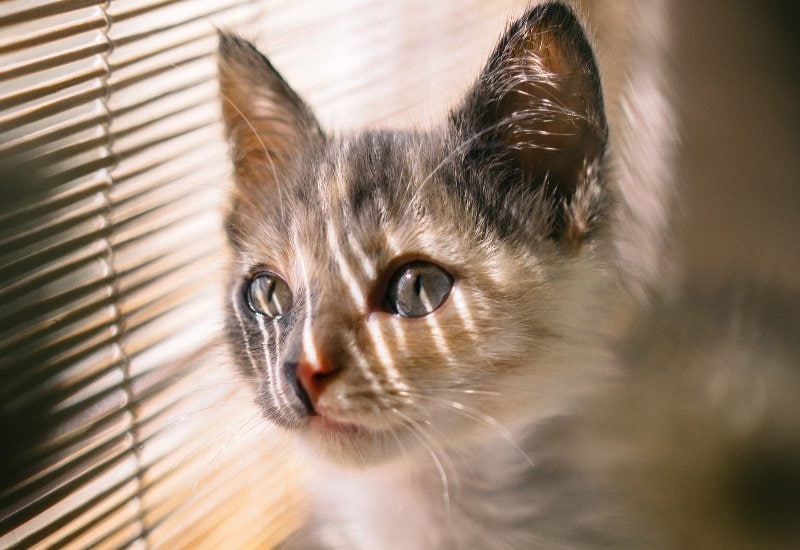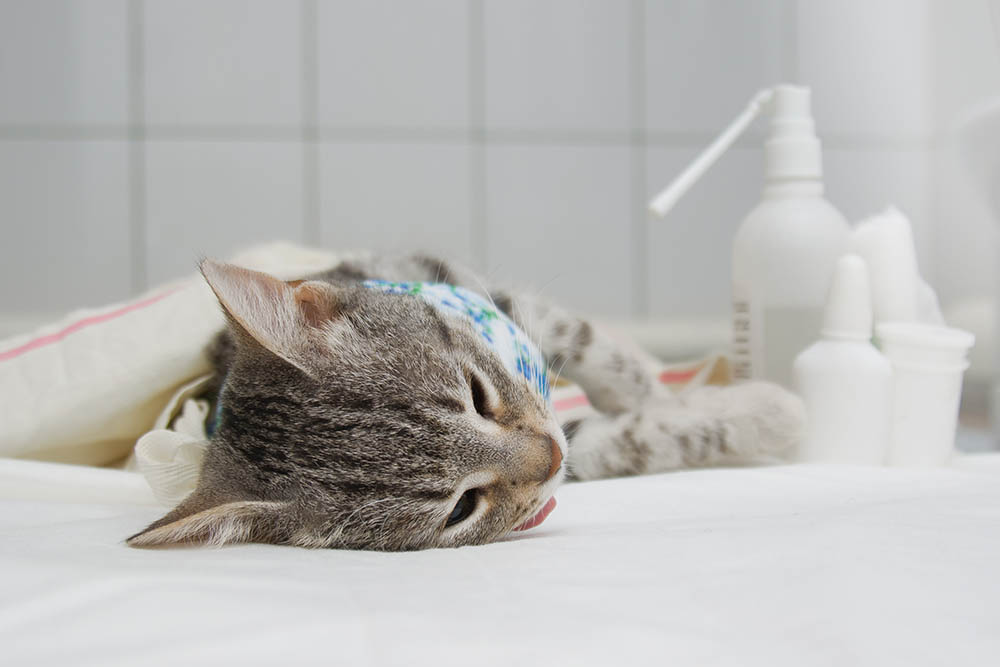How to Cat-Proof a Fence – 14 Possible Ways
Updated on
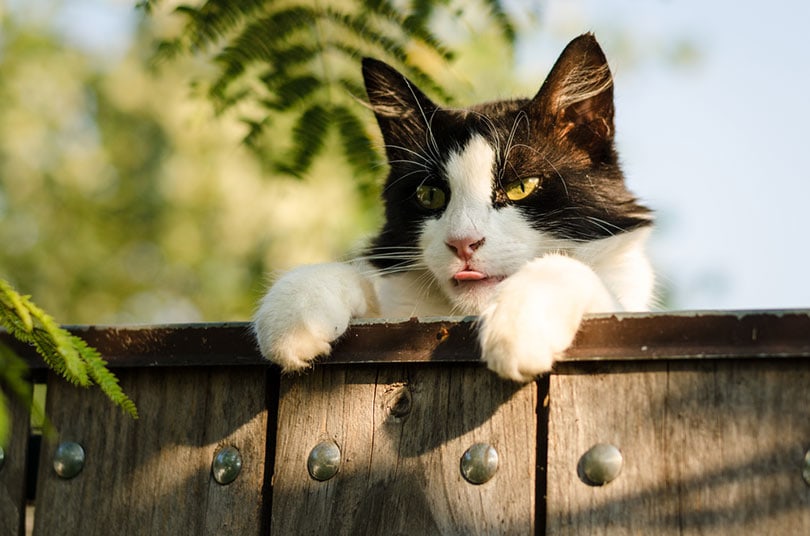
Letting your cat roam outdoors is never safe for them. Cats can get into plenty of trouble outside by themselves. Keeping them indoors is the best way to protect them from injuries, scuffles with other animals, traffic, disease, and getting lost.
If your cat is desperate to go outside, though, there are a few options for you. Letting them explore your fenced backyard sounds great, but cats can easily jump and climb over fences. In this article, we look at 14 ways that you can cat-proof your fence to make sure your kitty stays contained and safe. In most cases, these options will also prevent other roaming cats from entering your yard.
How to Cat-Proof a Fence – 14 Possible Ways
1. Fill the Gaps
Cats are nimble creatures, able to slip in and out of tight spaces easily. If the cat has a will, they will find a way. Check your fence for gaps that your cat may be able to squeeze through. They will typically have an easy time slipping under a gap at the bottom, between the fence and the ground. Even if you think that the space is too small for them, they may be able to surprise you. Depending on your cat’s size, they may be able to squeeze through any gap that’s wider than 2 inches.
Consider filling the gaps with chicken wire, garden fencing, or landscape edging. You can also use gravel, mulch, or rocks to give your fence a tidier look. If the gaps are between the fence boards, fill them with wire or mesh. This is also helpful for keeping other critters out of your yard.
2. Use a Scat Mat
One great way to keep your cat from being able to get over the fence is to take notice of trees or anything near the fence that your cat could jump on or climb. If the fence is too slippery or high for a cat to jump, they can easily climb the tree next to it to reach the top and hop over it. The same goes for tree stumps, sheds, chairs, or anything else that your cat can use to get them closer to the top of the fence. Block your cat’s access to these things. You can use a scat mat to wrap around trees or even put it on the fence itself to keep your cat away from it.
3. Use Curved Fences
Curved fencing can discourage your cat from climbing because it doesn’t go straight up, which will eventually make them end up upside down. Since this is scary for many cats, they may stay away from the fence completely.

4. Create Overhangs
Using fencing material or pieces of wood, you can create an overhang for the top of your fence. Use nails or zip ties to attach it. This will look like a ledge that goes all the way around your yard. Your cat won’t be able to navigate this ledge even if they climb to the top of the fence. The ledge also makes a convenient place for flowerpots or plants.
5. Use Vinyl Fencing
One way to keep cats from climbing fences is to use fencing that they won’t be able to grip. Vinyl is too slippery for cat claws to sink into, and they won’t be able to secure a good enough hold on the material to get anywhere. This is a good option if you’re building a new fence. Building the entire fence in cat-proof material will keep your cat contained in your yard without the need for additional measures.
6. Install Wire Mesh
At the top of the fence, install wire mesh to create a barrier. Place the mesh at the base of the fence, either going straight up or curving in an arc. Cats will have no choice but to try and climb the mesh, which will fold and bend. When the mesh doesn’t enable them to climb, they will be discouraged from continuing and climb back down. The mesh can be held up by poles along the fence so you can cover the entire area.
7. Attach a Fence Roller
At the top of your fence, perhaps in several places, consider using fence rollers. These are plastic or metal pipes that roll when touched, so your cat will be unable to get a grip on them. They won’t be able to pull themselves up to the top of the fence and could learn that it’s useless to try.
8. Utilize Plastic
A hard sheet of plastic installed at the top of the fence will make it impossible for cats to get over it. They can’t climb plastic or lift themselves on it. These sheets of plastic can be any color that you’d like. You can even combine them to create a multicolored barrier along the perimeter of your yard. The plastic sheets can go straight up or be placed at a 45° angle.
9. Build a Catio
Sometimes, the best thing to do for your cat to keep them safely contained is to build a catio. These outdoor hangouts for cats are made using chicken wire for the sides and are usually held up by wooden frames. You can let your cat enjoy their time outside without worrying about them figuring out how to scale the fence.
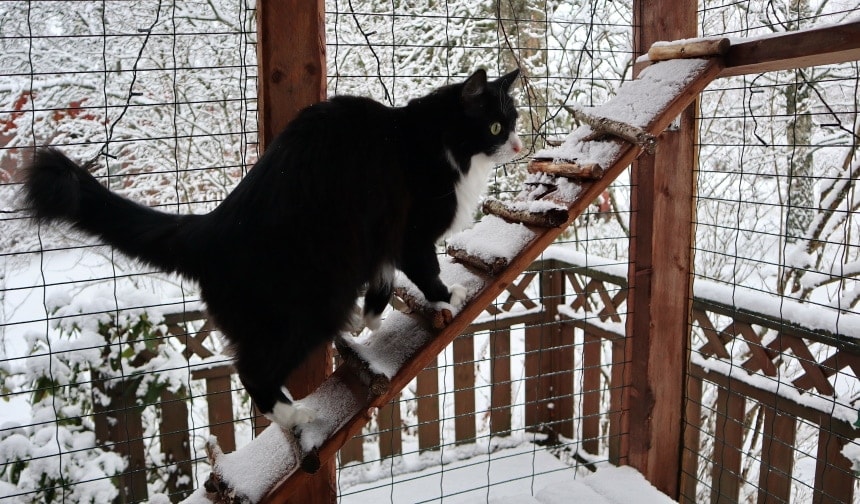
10. Use Chicken Wire
Chicken wire is used in the same way as wire mesh. It can be installed on top of the fence straight up or at an angle, creating an overhang in your yard. Chicken wire is not strong enough to support your cat’s weight and will fold as they try to climb it. This will prevent them from being able to get over the top of the fence.
11. Add Additional Fencing
Most cats can easily jump to the top of the 4’ fence and won’t have to climb it. To prevent this, add additional fencing to the top of the existing fence to make it higher. A fence extension system is available for purchase for added convenience. The top of it has mesh that prevents cats from being able to climb. You can also make your own fence extension by adding mesh or chicken wire to garden fencing.
12. Build a Cat Run
Installing a tunnel around the perimeter of your inner fence will keep your cat contained and unable to climb anything. Wooden boards and chicken wire or mesh can be attached to make a roof and another wall, enclosing your fence at the bottom. One end of the tunnel can be attached to a door or window of your house so your cat can go outside whenever they want to, and you know that they’re safe.
13. Keep Your Cat on a Leash
This may seem to defeat the purpose of your cat going outside. They want to jump and explore, not sit there tethered to you. But if you just can’t trust that your cat will be unable to climb your fence, this is the best way to keep them safe but still let them get fresh air. You can use long leads attached to tie-outs if necessary to give them a bit more freedom. Just make sure they can’t jump onto or over anything to prevent injuries.
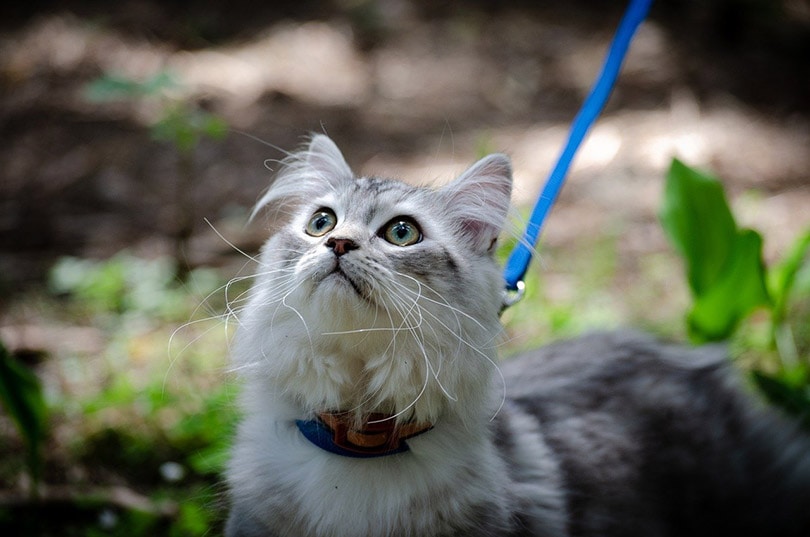
14. Keep Your Cat Inside
The safest place for your cat to be is indoors. They might love to roam around outside, but if you can’t keep them safely contained, they should stay inside. You can install window perches, grow cat grass, and give them plenty of cat trees to climb inside. Place these by screened-in windows so they can get fresh air.
Conclusion
Cats love spending time outdoors, but it’s only okay to let them do this if they’re safe. If they can climb your fence and escape the backyard, this isn’t an ideal situation for anyone. We hope that you’ve considered one or more of these ideas, or maybe you were inspired to come up with a few of your own! Keeping your cat safe and secure can give you the peace of mind to enjoy spending time outside with them, too. There are many different fences out there, but we are confident that one of these tips will work for your needs.
See also:
- How To Keep a Cat from Leaping Over a Gate: 9 Great Options
- How to Keep Cats Away from Plants: 8 Vet-Approved Tips
Featured Image Credit: Kalo Kanev, Shutterstock


